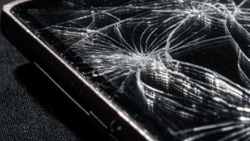A new polymer is the latest discovery leading toward self-healing phone screens

A new study published by Science discusses a new hard, glass-like polymer that can actually heal itself by applying a bit of hand pressure. Polymers with the ability to self heal usually require heat in the neighborhood of 120 degrees Celsius (248 degrees Fahrenheit) to do the job. This discovery could make its way to our favorite topic of discussion, smartphones, as broken screens could end up healing themselves.
This isn't the first time that a material with the potential to replace handset screens was discovered with self-healing properties. Back in March, chemists at the University of California at Riverside and the University of Colorado discovered a self-healing material that can stretch to 50 times its original size. In August, Motorola announced that it had been granted a patent for a display that heals itself.
All of this work in various labs around the world will hopefully lead to that glorious day when we drop our brand new smartphone on a rock hard surface; instead of getting upset, we sit and watch as the cracks on the screen disappear, making it appear pristine without a single mark or scratch.
source: Science via Engadget
The new polymer written about in Science was discovered at the University of Tokyo by a team of researches that includes Professor Takuzo Aida. As with many great modern discoveries, the whole thing was the result of a mistake. It turns out that a grad student with the moniker of Yu Yanagisawa found that cut edges of the polymer would stick to each other, when pressed down by hand at 21 degrees Celsius (69.8 degrees Fahrenheit). Yu figured that he had created a new type of adhesive. Instead, he might have come up with the material that leads to the creation of the first self-healing smartphone display.
source: Science via Engadget













Things that are NOT allowed: